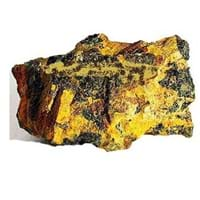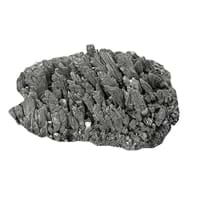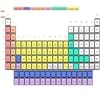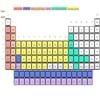Polonium vs Magnesium
Periodic Table
Symbol
Po
Mg
Group Number
16
2
2
16
Period Number
6
3
Block
p block
s block
Element Family
Post-Transition
Alkaline Earth
CAS Number
7440086
99+
7439954
99+
Space Group Name
Pm-3m
P63/mmc
Space Group Number
221.00
3
194.00
5
Facts
Interesting Facts
- Polonium was the first radioactive element to be discovered.
- Polonium element and its compounds are highly radioactive.
- Its alloy with Beryllium provides source of neutrons.
- Magnesium ions are present in every chlorophyll of every green plant .
- Controlling Magnesium fire by pouring water on it will result in explosions.
Sources
Mining, Ores of metals
By Electrolysis Process, In Ocean, Mining
History
Who Discovered
Pierre Curie and Marie Curie
Joseph Black
Discovery
In 1898
In 1755
Abundance
Abundance In Universe
Not Available
6 * 10-2 %
2
Abundance In Sun
~-9999 %
~0.07 %
2
Abundance In Meteorites
Not Available
12.00 %
2
Abundance In Earth's Crust
Not Available
2.90 %
4
Abundance In Oceans
0.00 %
99+
0.13 %
2
Abundance In Humans
Not Available
0.03 %
4
Uses
Uses & Benefits
- Polonium metal has different Allotropes, it is used in antistatic devices and for research purpose.
- A 1 gram of Polonium can reach a temperature of 500°C, hence it is used as a heat source for space equipment.
- Magnesium aluminum alloy improves the mechanical strength and welding characteristics and hence it is used in aeroplane and car manufacturing.
- It is also used to remove sulfur from the molten iron and steel.
Industrial Uses
Aerospace Industry, Ammunition Industry
Aerospace Industry, Ammunition Industry, Automobile Industry, Chemical Industry, Pharmaceutical Industry
Medical Uses
NA
NA
Other Uses
Alloys
Surgical Instruments Manufacturing
Biological Properties
Toxicity
Highly Toxic
Non Toxic
Present in Human Body
No
Yes
In Blood
0.00 Blood/mg dm-3
37
37.80 Blood/mg dm-3
5
In Bone
0.00 p.p.m.
36
1,800.00 p.p.m.
4
Physical Properties
Melting Point
254.00 °C
99+
650.00 °C
99+
Boiling Point
962.00 °C
99+
1,107.00 °C
99+
Appearance
Physical State
Solid
Solid
Color
Silver
Gray
Luster
NA
NA
Hardness
Mohs Hardness
Not Available
2.50
14
Brinell Hardness
Not Available
260.00 MPa
36
Speed of Sound
Not Available
4,940.00 m/s
11
Optical Properties
Reflectivity
Not Available
74.00 %
7
Allotropes
Yes
No
α Allotropes
α-polonium
Not Available
β Allotropes
β-polonium
Not Available
γ Allotropes
Not Available
Not Available
Chemical Properties
Chemical Formula
Po
Mg
Isotopes
Known Isotopes
29
10
15
24
Electronegativity
Pauling Electronegativity
2.00
7
1.31
31
Sanderson Electronegativity
Not Available
1.32
18
Allred Rochow Electronegativity
1.76
2
1.23
25
Mulliken-Jaffe Electronegativity
2.48
1
1.37
16
Allen Electronegativity
2.19
2
1.29
35
Electropositivity
Pauling Electropositivity
2.00
99+
2.69
23
Ionization Energies
1st Energy Level
812.10 kJ/mol
14
737.70 kJ/mol
24
2nd Energy Level
Not Available
1,450.70 kJ/mol
99+
3rd Energy Level
Not Available
7,732.70 kJ/mol
5
4th Energy Level
Not Available
10,542.50 kJ/mol
4
5th Energy Level
Not Available
13,630.00 kJ/mol
3
6th Energy Level
Not Available
18,020.00 kJ/mol
3
7th Energy level
Not Available
21,711.00 kJ/mol
3
8th Energy Level
Not Available
25,661.00 kJ/mol
3
9th Energy Level
Not Available
31,653.00 kJ/mol
3
10th Energy Level
Not Available
35,458.00 kJ/mol
5
11th Energy Level
Not Available
169,988.00 kJ/mol
1
12th Energy Level
Not Available
189,368.00 kJ/mol
1
Electrochemical Equivalent
3.90 g/amp-hr
8
0.45 g/amp-hr
99+
Electron Work Function
Not Available
3.66 eV
29
Other Chemical Properties
Ionization, Radioactive Isotopes, Solubility
Corrosion, Highly Inflammable, Ionization, Solubility
Atomic Properties
Atomic Number
84
32
12
99+
Electron Configuration
[Xe] 4f14 5d10 6s2 6p4
[Ne] 3s2
Crystal Structure
Monoclinic (MON)
Hexagonal Close Packed (HCP)
Crystal Lattice
MON-Crystal-Structure-of-Polonium.jpg#100
HCP-Crystal-Structure-of-Magnesium.jpg#100
Atom
Number of Protons
84
32
12
99+
Number of Neutrons
125
19
12
99+
Number of Electrons
84
32
12
99+
Radius of an Atom
Atomic Radius
168.00 pm
23
160.00 pm
27
Covalent Radius
140.00 pm
99+
141.00 pm
99+
Van der Waals Radius
197.00 pm
29
173.00 pm
37
Atomic Weight
209.00 amu
28
24.31 amu
99+
Atomic Volume
22.23 cm3/mol
13
13.97 cm3/mol
37
Adjacent Atomic Numbers
Valence Electron Potential
Not Available
40.00 (-eV)
99+
Lattice Constant
335.90 pm
99+
320.94 pm
99+
Lattice Angles
π/2, π/2, π/2
π/2, π/2, 2 π/3
Lattice C/A Ratio
Not Available
Not Available
Mechanical Properties
Density
Density At Room Temperature
9.20 g/cm3
99+
1.74 g/cm3
99+
Density When Liquid (at m.p.)
9.40 g/cm3
19
1.58 g/cm3
99+
Tensile Strength
Not Available
Not Available
Viscosity
Not Available
Not Available
Vapor Pressure
Elasticity properties
Shear Modulus
Not Available
17.00 GPa
37
Bulk Modulus
Not Available
45.00 GPa
25
Young's Modulus
Not Available
45.00 GPa
39
Poisson Ratio
Not Available
0.29
15
Other Mechanical Properties
NA
NA
Magnetic Properties
Magnetic Characteristics
Specific Gravity
9.32
31
1.74
99+
Magnetic Ordering
Nonmagnetic
Paramagnetic
Electrical Properties
Electrical Property
Conductor
Conductor
Resistivity
0.40 nΩ·m
99+
43.90 nΩ·m
99+
Electrical Conductivity
0.02 106/cm Ω
99+
0.23 106/cm Ω
7
Electron Affinity
183.30 kJ/mol
3
0.00 kJ/mol
40
Thermal Properties
Specific Heat
0.12 J/(kg K)
40
1.02 J/(kg K)
4
Molar Heat Capacity
26.40 J/mol·K
28
24.87 J/mol·K
99+
Thermal Conductivity
20.00 W/m·K
99+
156.00 W/m·K
8
Critical Temperature
Not Available
Not Available
Thermal Expansion
23.50 µm/(m·K)
16
24.80 µm/(m·K)
15
Enthalpy
Enthalpy of Vaporization
60.30 kJ/mol
99+
128.70 kJ/mol
99+
Enthalpy of Fusion
13.00 kJ/mol
26
8.95 kJ/mol
39
Enthalpy of Atomization
134.00 kJ/mol
99+
148.50 kJ/mol
99+
Standard Molar Entropy
Not Available
32.70 J/mol.K
99+
|
||
|
||
|












